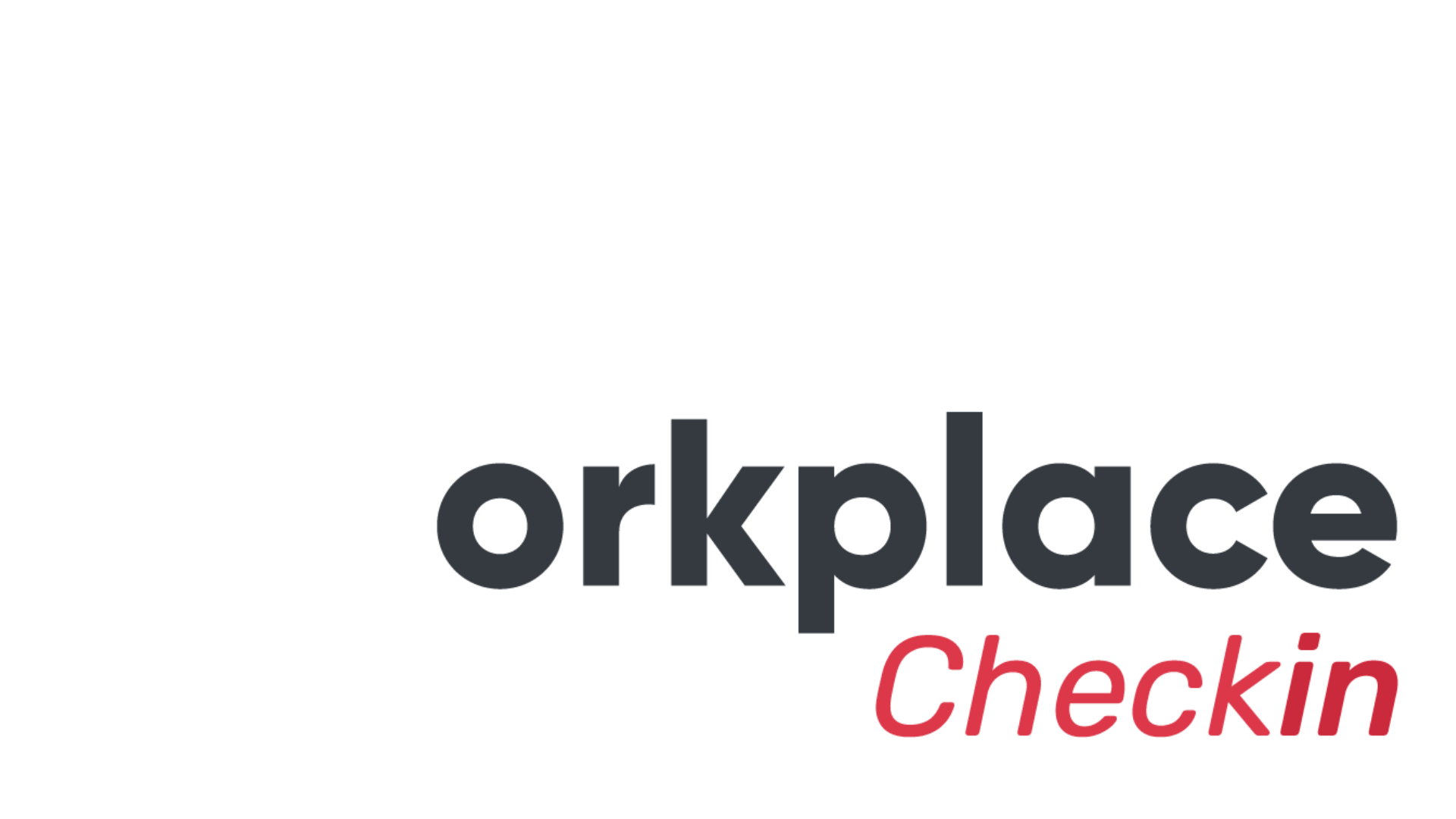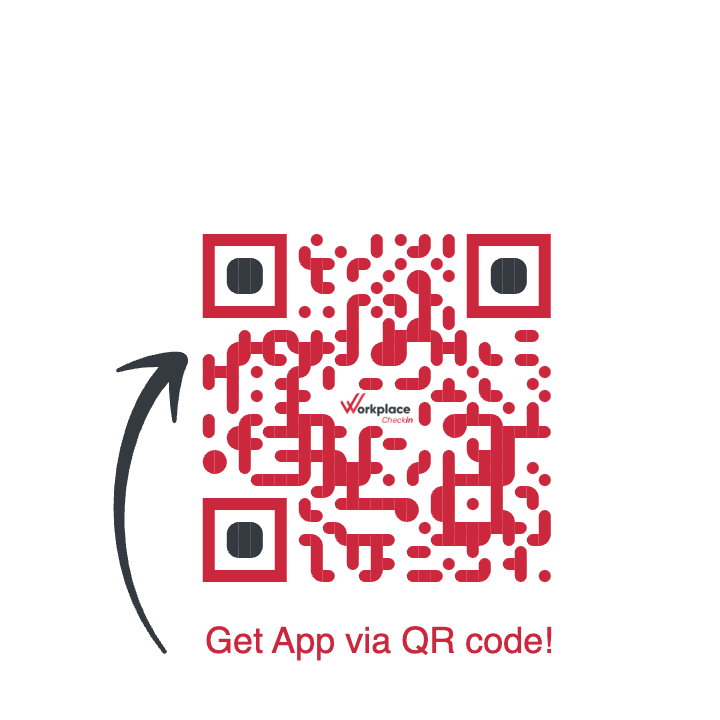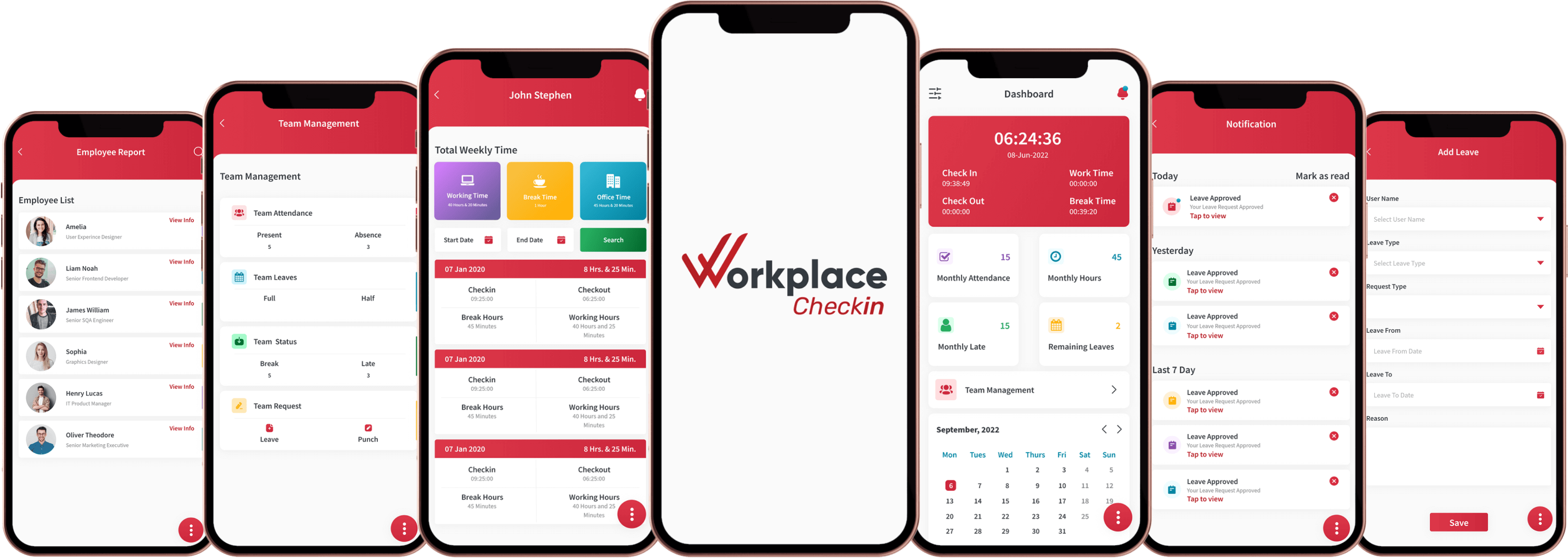

Exploring the Key Stages of HRIS Implementation
Introduction
The dynamic landscape of Human Resources has witnessed a transformative shift in recent years, largely propelled by the integration of technology. One of the pivotal milestones in this evolution is the implementation of Human Resource Information Systems (HRIS). In this blog post, we embark on a comprehensive exploration of the key stages involved in HRIS implementation. This strategic process not only streamlines HR functions but also lays the foundation for a more efficient, data-driven, and responsive human resources management system.
1. Overview of HRIS Implementation
HRIS implementation is a multi-faceted endeavor that involves the seamless integration of technology to enhance HR functions within an organization. At its core, an HRIS serves as a centralized hub for managing and storing HR data, automating processes, and facilitating informed decision-making. The process encompasses various stages, each contributing to the overall success of the system.
This blog will dissect these stages, providing valuable insights into the planning, configuration, testing, and post-implementation phases. Through a step-by-step analysis, HR professionals will gain a deeper understanding of the intricacies involved in implementing an HRIS and be better equipped to navigate the challenges associated with this transformative journey.
Importance of a Strategic Approach
As organizations increasingly recognize the pivotal role of HRIS in optimizing HR processes, the importance of adopting a strategic approach becomes paramount. A strategic approach involves aligning HRIS implementation with the broader organizational goals and objectives. This ensures that the implemented system not only meets the immediate needs of HR but also contributes to the long-term success and growth of the entire organization.
Strategic planning sets the foundation for a more cohesive and integrated HRIS. It involves defining clear objectives, comprehensively analyzing stakeholder needs, and allocating resources judiciously. By taking a strategic stance, organizations can tailor their HRIS to address specific pain points and challenges unique to their industry and workforce.
In the subsequent sections of this blog, we will delve into the specific stages of HRIS implementation, shedding light on the intricacies of planning, system configuration, testing, and post-implementation optimization. This strategic lens will guide HR professionals through a journey that not only enhances operational efficiency but also contributes to the overall success of their organizations.
2. Planning Phase - The Foundation of Success
The planning phase of HRIS implementation serves as the bedrock for the entire process, laying the groundwork for a successful integration that aligns with organizational objectives and addresses the needs of stakeholders. This phase encompasses several critical components that collectively shape the trajectory of the implementation journey.
Defining Objectives and Scope
The first step in the planning phase involves clearly defining the objectives and scope of the HRIS implementation. What specific challenges or inefficiencies is the organization looking to address? Are there particular HR processes that need automation or optimization? By establishing concrete objectives, organizations can create a roadmap for the implementation process, ensuring that the end result aligns with the overarching goals of the business.
Stakeholder Analysis
A comprehensive stakeholder analysis is integral to understanding the perspectives, expectations, and concerns of those who will be impacted by the HRIS implementation. This includes HR professionals, employees, IT teams, and any other relevant stakeholders. By identifying and engaging with these key players early in the planning phase, organizations can garner valuable insights, build consensus, and mitigate potential resistance during later stages of the implementation.
Budgeting and Resource Allocation
Effective budgeting and resource allocation are critical aspects of the planning phase. Organizations need to determine the financial investment required for acquiring and implementing the HRIS, accounting for software costs, customization expenses, training programs, and ongoing maintenance. Simultaneously, allocating human resources, both within the HR department and across other relevant teams, is crucial to ensure a smooth and collaborative implementation process.
Risk Assessment and Mitigation Strategies
Identifying potential risks and developing mitigation strategies is a proactive approach to safeguard the HRIS implementation from potential challenges. Risks can range from technical issues and data migration complexities to resistance from end-users. Conducting a thorough risk assessment allows organizations to anticipate obstacles and develop strategies to address them. Whether through contingency plans, communication strategies, or alternative solutions, the planning phase is the opportune time to establish a robust framework for risk management.
In essence, the planning phase sets the stage for a well-orchestrated HRIS implementation. By defining clear objectives, understanding stakeholder dynamics, allocating resources judiciously, and implementing robust risk mitigation strategies, organizations pave the way for a smoother transition into subsequent stages, ensuring that the HRIS aligns seamlessly with their overarching goals and contributes to organizational success.
3. HRIS Strategy – The Pivotal Element
The HRIS strategy phase is a pivotal element in the implementation journey, focused on aligning the chosen Human Resource Information System with the broader goals and objectives of the organization. This strategic alignment ensures that the HRIS not only addresses immediate needs but also serves as a catalyst for long-term success.
Aligning HRIS with Organizational Goals
The first critical task in this phase is to align the HRIS with the overarching goals and vision of the organization. Understanding how the HRIS can contribute to the achievement of business objectives is essential. For instance, if the organizational goal is to enhance employee engagement, the HRIS should be configured to support initiatives such as performance management, training, and development, and employee recognition.
This alignment is not only about current needs but should also consider the future trajectory of the organization. A forward-looking approach ensures that the HRIS remains adaptable and scalable as the organization evolves.
Choosing the Right HRIS Solution
Selecting the most suitable HRIS solution is a decision that profoundly influences the success of the implementation. Organizations must evaluate available options based on their features, scalability, compatibility with existing systems, and vendor reputation. Considerations should also extend to user-friendliness, as an intuitive interface can enhance user adoption.
Moreover, the selected HRIS should be able to accommodate the unique needs and complexities of the organization. Whether it's compliance requirements, industry-specific regulations, or particular HR workflows, the chosen system should offer flexibility and customization options.
Customization vs. Out-of-the-Box Solutions
A key decision in the HRIS strategy phase revolves around customization versus opting for out-of-the-box solutions. Customization allows organizations to tailor the HRIS to their specific needs, aligning functionalities with unique processes and workflows. However, customization can be time-consuming and may involve higher costs.
On the other hand, out-of-the-box solutions offer quicker implementation and are generally more cost-effective. They come pre-configured with standard features and functionalities, suited for general HR processes. However, organizations must carefully assess whether the out-of-the-box solution adequately meets their specific requirements or if extensive customization is necessary.
Balancing these considerations is crucial. Organizations may find a middle ground by opting for a configurable solution that allows certain adaptations without the complexity of full-scale customization.
The HRIS strategy phase is about making informed decisions that set the stage for a successful implementation. By aligning the HRIS with organizational goals, carefully selecting the right solution, and striking a balance between customization and out-of-the-box functionalities, organizations pave the way for a system that not only meets immediate needs but also aligns seamlessly with the broader strategic objectives of the business.

4. Configuration Process - Tailoring the System to Fit Your Needs
The configuration process is a pivotal stage in HRIS implementation, focusing on tailoring the system to meet the specific needs and requirements of the organization. This phase involves making crucial decisions related to system settings, data migration, integration with existing systems, and establishing robust security protocols.
System Configuration Essentials
System configuration is at the heart of the customization process, allowing organizations to fine-tune the HRIS to align with their unique workflows and processes. This involves defining data fields, setting up user roles and permissions, configuring workflow automation, and personalizing interfaces. The goal is to create a system that not only captures and manages HR data efficiently but also reflects the organization's specific terminology and processes.
During this stage, collaboration between HR professionals and IT experts is crucial. Input from end-users is valuable in ensuring that the configured system meets their day-to-day operational needs while remaining user-friendly.
Data Migration Strategies
Data migration involves transferring existing HR data from legacy systems or manual records to the new HRIS. This process requires careful planning to ensure the accuracy, completeness, and integrity of the data being migrated. Organizations must identify the types of data to be migrated, clean and validate the data, and establish a timeline for the migration process.
Data migration strategies should also account for historical data, ensuring that essential information from the past is seamlessly integrated into the new system. Testing data migration processes in a controlled environment helps identify and address any issues before the system goes live.
Integration with Existing Systems
In many organizations, an HRIS doesn't operate in isolation but needs to integrate with existing systems such as payroll, accounting, and other enterprise resource planning (ERP) systems. Seamless integration is essential for the free flow of information across different departments and functions.
During the configuration process, organizations need to define integration points, establish data exchange protocols, and conduct thorough testing to ensure data accuracy and consistency. The goal is to create a cohesive digital ecosystem where various systems work in harmony, reducing manual data entry and minimizing the risk of errors.
Establishing Security Protocols
Security is a paramount concern when configuring an HRIS, considering the sensitive nature of HR data. Establishing robust security protocols involves defining access controls, encrypting sensitive information, and implementing measures to prevent unauthorized access or data breaches.
This phase includes determining user roles and permissions, implementing multi-factor authentication, and establishing audit trails to monitor system activities. Compliance with data protection regulations and industry standards is also a critical aspect of security configuration.
In short, the configuration process is the bridge between the strategic decisions made earlier in the implementation journey and the operational realities of day-to-day HRIS usage. By focusing on system configuration essentials, implementing effective data migration strategies, ensuring seamless integration with existing systems, and establishing stringent security protocols, organizations set the stage for a well-tailored HRIS that not only meets immediate needs but also forms a resilient foundation for future growth and evolution.
5. Development of HRIS – Implementing Strategies
The development phase of HRIS implementation is a crucial step where the strategic decisions made earlier start to materialize into a functional system. This phase involves collaboration between HR professionals and IT teams, prototyping and iterative development, addressing customization challenges, and ensuring the scalability and flexibility of the HRIS.
Collaborating with IT Teams
Effective collaboration between HR professionals and IT teams is vital during the development phase. Clear communication channels should be established to facilitate the exchange of insights and requirements. HR professionals bring their domain expertise, understanding the intricate nuances of HR processes, while IT teams contribute technical knowledge to translate these requirements into the HRIS.
Close collaboration ensures that the developed system aligns with both HR needs and technical constraints. Regular meetings and feedback loops are instrumental in refining the system during development, minimizing the risk of misunderstandings and ensuring that the final product meets expectations.
Prototyping and Iterative Development
Prototyping involves creating a simplified version of the HRIS to showcase its core functionalities and user interface. This allows stakeholders to visualize the system early in the development process, providing an opportunity for feedback and adjustments. Iterative development builds upon this feedback, refining the system through multiple cycles until it aligns perfectly with user expectations.
This iterative approach is invaluable in addressing evolving requirements and ensuring that the HRIS remains flexible to changes. Regular testing and feedback loops reduce the likelihood of costly modifications at later stages, fostering a more efficient and collaborative development process.
Addressing Customization Challenges
Customization is a double-edged sword. While tailoring the HRIS to specific organizational needs is essential, it can pose challenges such as increased development time, complexity, and potential maintenance issues. Addressing these challenges requires a careful balance between customization and maintaining the system's integrity.
During the development phase, organizations must identify the extent of customization needed and evaluate its impact on the overall implementation timeline and budget. Collaboration with IT teams is vital to finding solutions that meet HR requirements without compromising system stability.
Ensuring Scalability and Flexibility
As organizations grow and evolve, the HRIS must adapt to changing requirements. Ensuring scalability and flexibility during the development phase is essential for accommodating future growth and technological advancements. The system should be designed to handle increasing data volumes, additional functionalities, and integration with emerging technologies.
Scalability also involves considering factors like the number of users, data storage requirements, and potential system integrations. A flexible architecture allows for easier updates and modifications as organizational needs evolve over time.
In summary, the development phase is a critical juncture where collaborative efforts between HR and IT teams come to fruition. Prototyping and iterative development ensure that the HRIS meets user expectations, while addressing customization challenges requires a strategic approach. Ensuring scalability and flexibility prepares the system for future growth and technological advancements, solidifying its role as a dynamic and adaptable tool for HR professionals.
6. Testing Stage - Ensuring Accuracy and Reliability
The testing stage is a critical phase in HRIS implementation, where the functionality and performance of the system are rigorously evaluated. This phase ensures that the HRIS operates seamlessly, meeting user expectations, and minimizing the risk of disruptions once the system is live. The testing stage encompasses various types of testing, user acceptance testing (UAT), identifying and resolving issues, and ensuring data accuracy and system reliability.
Types of Testing in HRIS Implementation
Several types of testing are essential to validate different aspects of the HRIS:
Unit Testing: This focuses on individual components or modules of the HRIS to ensure that each part functions correctly.
Integration Testing: This examines how different modules or systems work together to ensure a seamless flow of information and data.
Performance Testing: This assesses how the HRIS performs under different conditions, including load testing to determine its responsiveness with varying user loads.
Security Testing: This evaluates the system's ability to safeguard sensitive HR data from unauthorized access or cyber threats.
Regression Testing: Ensures that new updates or modifications do not negatively impact existing functionalities.
User Acceptance Testing (UAT): Involves end-users testing the system to ensure it meets their needs and expectations.
User Acceptance Testing (UAT)
UAT is a critical component of the testing stage, as it involves end-users validating the system against their real-world scenarios. This process ensures that the HRIS aligns with the practical requirements and workflows of HR professionals, managers, and employees.
During UAT, end-users simulate real-world scenarios, perform common tasks, and assess the system's usability. Their feedback is invaluable in identifying any discrepancies between the system's design and actual user needs. UAT serves as a final validation before the system is deployed more broadly within the organization.
Identifying and Resolving Issues
Testing inevitably reveals issues or bugs within the HRIS. Identifying and resolving these issues promptly is crucial to prevent operational disruptions once the system is live. A systematic approach to issue tracking, prioritization, and resolution is essential during the testing stage.
Collaboration between HR professionals and the IT team is key in efficiently addressing identified issues. Clear communication channels and a well-defined process for issue resolution contribute to a smoother testing phase.
Ensuring Data Accuracy and System Reliability
Data accuracy is paramount in HRIS, where precision in employee records, payroll information, and other HR data is crucial. The testing stage should include thorough checks to ensure that data migration processes were successful and that data is accurately captured, stored, and retrievable.
Additionally, system reliability is vital to ensure uninterrupted HR operations. Testing should assess the system's stability under various conditions and potential failure points. This includes validating backup and recovery processes to mitigate the impact of unexpected events.
In conclusion, the testing stage is the final checkpoint before HRIS implementation goes live. By conducting various types of testing, emphasizing user acceptance testing, promptly identifying and resolving issues, and ensuring data accuracy and system reliability, organizations can confidently move forward, knowing that their HRIS is robust, user-friendly, and poised to enhance HR processes effectively.
7. Implementation Phase - Going Live with Confidence
The implementation phase marks the transition from development and testing to the live deployment of the HRIS within the organization. This stage involves meticulous planning, effective communication, training programs for end-users, monitoring the go-live process, and addressing teething problems that may arise during initial implementation.
Rollout Planning and Communication
Rollout planning is a strategic step in ensuring a smooth transition to the new HRIS. This involves defining a clear timeline, scheduling the deployment, and communicating the implementation plan to all relevant stakeholders. Transparent and effective communication is crucial to manage expectations and alleviate concerns among employees and other departments affected by the HRIS.
The rollout plan should outline key milestones, responsibilities, and contingency measures in case of unexpected issues. By keeping all stakeholders informed, organizations create an atmosphere of collaboration and support during this transformative period.
Training Programs for End-Users
The success of an HRIS depends heavily on the competence of its end-users. Training programs play a pivotal role in ensuring that employees, HR professionals, and other stakeholders can leverage the system to its full potential. Training may include both in-person and virtual sessions, user manuals, and online resources to accommodate diverse learning preferences.
Tailoring training programs to specific user roles and responsibilities is essential. For example, HR administrators may require in-depth training on system configuration, while employees may focus on using self-service features. Training should be ongoing, providing support as users acclimate to the new system.
Monitoring Go-Live and Initial Feedback
As the HRIS goes live, monitoring the initial stages is crucial to identify any unforeseen issues and gather feedback from users. This involves closely monitoring system performance, data accuracy, and user interactions. A designated support team should be available to address immediate concerns and provide assistance.
Collecting user feedback during the initial phase helps organizations understand how well the system aligns with user expectations and identifies areas for improvement. This feedback loop is valuable for making swift adjustments and addressing any issues before they become widespread concerns.
Addressing Teething Problems
Despite thorough planning and testing, teething problems are not uncommon during the initial implementation phase. These may include unexpected technical glitches, user confusion, or issues with data migration. Organizations should be proactive in addressing these challenges promptly.
Having a dedicated support team or helpdesk is essential for providing immediate assistance to users facing difficulties. Regular communication, updates, and transparency about known issues and their resolution timelines help manage user expectations and maintain confidence in the new system.
The implementation phase is a critical juncture in the HRIS journey. By carefully planning the rollout, providing comprehensive training programs, monitoring the go-live process, and addressing teething problems with agility and transparency, organizations can navigate the complexities of implementation and set the stage for a successful and smoothly functioning HRIS.
8. Post-Implementation Optimization - Continuous Improvement and Optimization
The post-implementation optimization phase is a continuous and iterative process that follows the initial deployment of the HRIS. This stage focuses on refining the system based on user feedback, monitoring performance, and adapting to evolving business needs. By implementing continuous improvement strategies, gathering user feedback, monitoring system performance, and remaining adaptable to changes, organizations can maximize the benefits of their HRIS over time.
Continuous Improvement Strategies
Continuous improvement is a fundamental aspect of post-implementation optimization. This involves regularly assessing the effectiveness of the HRIS and identifying areas for enhancement. Continuous improvement strategies can include:
- Conducting periodic reviews of system performance and user satisfaction.
- Staying abreast of updates and new features released by the HRIS provider.
- Collaborating with end-users to identify emerging needs and challenges.
- Implementing regular system audits to ensure data accuracy and compliance.
A commitment to ongoing refinement ensures that the HRIS remains aligned with organizational goals and industry best practices.
Gathering User Feedback
User feedback is a valuable source of insights for optimizing the HRIS. Establishing mechanisms to collect feedback, such as surveys, focus groups, or a dedicated feedback portal, allows organizations to understand user experiences, challenges, and suggestions for improvement. Actively seeking and incorporating user feedback fosters a sense of user ownership and engagement with the system.
Feedback should be analyzed systematically, and trends or recurring issues should be addressed promptly. Positive feedback can also highlight successful features that can be promoted or expanded within the system.
Monitoring System Performance
Continuous monitoring of system performance is crucial for identifying and addressing potential issues before they impact users. Key aspects to monitor include:
System responsiveness and speed.
- Data accuracy and integrity.
- Security measures and compliance.
- Integration with other systems.
Regular system audits and performance reviews help ensure that the HRIS remains reliable and meets the organization's operational needs.
Adapting to Evolving Business Needs
Business environments are dynamic, and organizational needs evolve over time. The post-implementation phase should be characterized by a proactive approach to adapt the HRIS to these changes. This may involve:
- Scaling the system to accommodate organizational growth.
- Integrating new functionalities or modules to address emerging HR requirements.
- Staying informed about technological advancements and updating the HRIS accordingly.
The ability to adapt the HRIS to evolving business needs ensures its continued relevance and value to the organization.
In conclusion, the post-implementation optimization phase is about maintaining a responsive and effective HRIS. Through continuous improvement strategies, gathering user feedback, monitoring system performance, and adapting to evolving business needs, organizations can ensure that their HRIS remains a valuable asset, supporting HR functions and contributing to the overall success of the organization.
9. HRIS Best Practices – Continuous Improvement
HRIS best practices encapsulate the collective wisdom gained from successful implementations, insights into common pitfalls, and strategies for aligning the HRIS with overall HR best practices. By incorporating lessons from successful implementations, avoiding common pitfalls, and ensuring alignment with HR best practices, organizations can enhance the effectiveness and efficiency of their HRIS.
Lessons from Successful Implementations
Learning from successful implementations involves understanding the strategies and approaches that contributed to their success. Key lessons include:
Thorough Planning:
Successful implementations are often preceded by meticulous planning, including defining clear objectives, engaging stakeholders, and conducting comprehensive risk assessments.
User Involvement:
Involving end-users throughout the implementation process, from planning to testing, ensures that the HRIS meets practical needs and fosters user adoption.
Adaptability:
Successful organizations are often those that adapt their HRIS to evolving needs, leveraging customization and flexibility to address unique requirements.
Continuous Improvement:
Organizations that view HRIS implementation as an ongoing process, with a commitment to continuous improvement, tend to maximize the long-term benefits of their system.
Common Pitfalls to Avoid
Awareness of common pitfalls is crucial for steering clear of potential challenges during HRIS implementation. Some common pitfalls include:
Insufficient Training:
Inadequate training can hinder user adoption and limit the system's effectiveness. Investing in comprehensive training programs ensures that users can leverage the full capabilities of the HRIS.
Poor Data Quality:
Neglecting data quality during migration or failing to establish data governance practices can lead to inaccuracies and inefficiencies in HR processes.
Lack of Change Management:
Resistance to change can impede successful implementation. Implementing effective change management strategies, including communication and support initiatives, is essential.
Overlooking Security:
In an era of increasing data breaches, overlooking security measures can expose sensitive HR data to risks. Robust security protocols are crucial for protecting confidential information.
Aligning HRIS with HR Best Practices
Aligning the HRIS with HR best practices is integral to maximizing its impact on organizational success. This involves:
Strategic Alignment:
Ensuring that the HRIS is strategically aligned with organizational goals and contributes to broader HR strategies.
Data-Driven Decision-Making:
Leveraging the data analytics capabilities of the HRIS to inform HR decisions, measure performance, and identify areas for improvement.
Employee Engagement:
Incorporating features within the HRIS that enhance employee engagement, such as self-service options, performance management tools, and recognition programs.
Compliance and Reporting:
Adhering to legal and regulatory requirements and leveraging the HRIS for streamlined compliance reporting.
In essence, HRIS best practices revolve around leveraging the lessons from successful implementations, avoiding common pitfalls, and aligning the HRIS with HR best practices. By adopting these practices, organizations can enhance the efficiency of their HR processes, support strategic HR initiatives, and contribute to overall organizational success.
10. Conclusion
As we conclude our exploration of HRIS implementation, it's essential to recap the key stages of this transformative journey, reflect on the long-term benefits, and cast a glance towards the future trends in HR technology.
Recap of Key Stages
The journey through HRIS implementation involves several key stages, each playing a crucial role in the system's success:
Planning Phase:
Defining objectives, conducting stakeholder analysis, budgeting, and risk assessment.
HRIS Strategy: Aligning the HRIS with organizational goals, choosing the right solution, and balancing customization with out-of-the-box functionalities.
Configuration Process: Customizing the system, migrating data, integrating with existing systems, and establishing robust security protocols.
Development of HRIS: Collaborating with IT teams, prototyping, addressing customization challenges, and ensuring scalability and flexibility.
Testing Stage: Types of testing, user acceptance testing (UAT), issue resolution, and ensuring data accuracy and system reliability.
Implementation Phase: Rollout planning, training programs, monitoring go-live, and addressing teething problems.
Post-Implementation Optimization: Continuous improvement strategies, gathering user feedback, monitoring system performance, and adapting to evolving business needs.
The Long-Term Benefits of HRIS Implementation
The implementation of an HRIS brings forth a multitude of long-term benefits for organizations:
Increased Efficiency: Automation of HR processes streamlines workflows, reducing manual tasks and administrative overhead.
Data-Driven Decision-Making: Access to real-time data allows for informed decision-making and strategic planning.
Enhanced Employee Experience: Self-service features, improved communication, and streamlined processes contribute to a positive employee experience.
Compliance and Reporting: The HRIS aids in ensuring compliance with regulations and facilitates reporting for auditing purposes.
Scalability: Organizations can scale their HRIS to accommodate growth and evolving needs.
Looking Ahead: Future Trends in HR Technology
The landscape of HR technology is dynamic, with continuous advancements shaping the future. Some trends to watch out for include:
Artificial Intelligence (AI) and Machine Learning (ML):
Enhancing predictive analytics, automating routine tasks, and improving personalization.
Employee Wellbeing Technology:
Integrating tools that support mental health, wellness, and overall employee wellbeing.
Remote Work Solutions:
Adapting HRIS to cater to the needs of a remote workforce, with features supporting collaboration, communication, and virtual onboarding.
Enhanced Analytics:
Deeper insights through advanced analytics, providing a more comprehensive understanding of HR metrics and trends.
Focus on Diversity, Equity, and Inclusion (DEI):
HR technology evolving to support DEI initiatives through unbiased recruitment processes, inclusive communication tools, and analytics to measure diversity metrics.
In conclusion, the journey of HRIS implementation is not just a one-time event but an ongoing process of adaptation and improvement. By leveraging the lessons learned from each stage, organizations can unlock the full potential of their HRIS, providing a solid foundation for effective HR management and contributing to the overall success of the organization in the ever-evolving landscape of HR technology.






